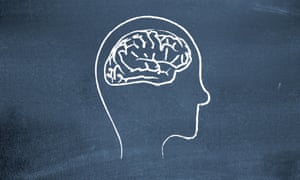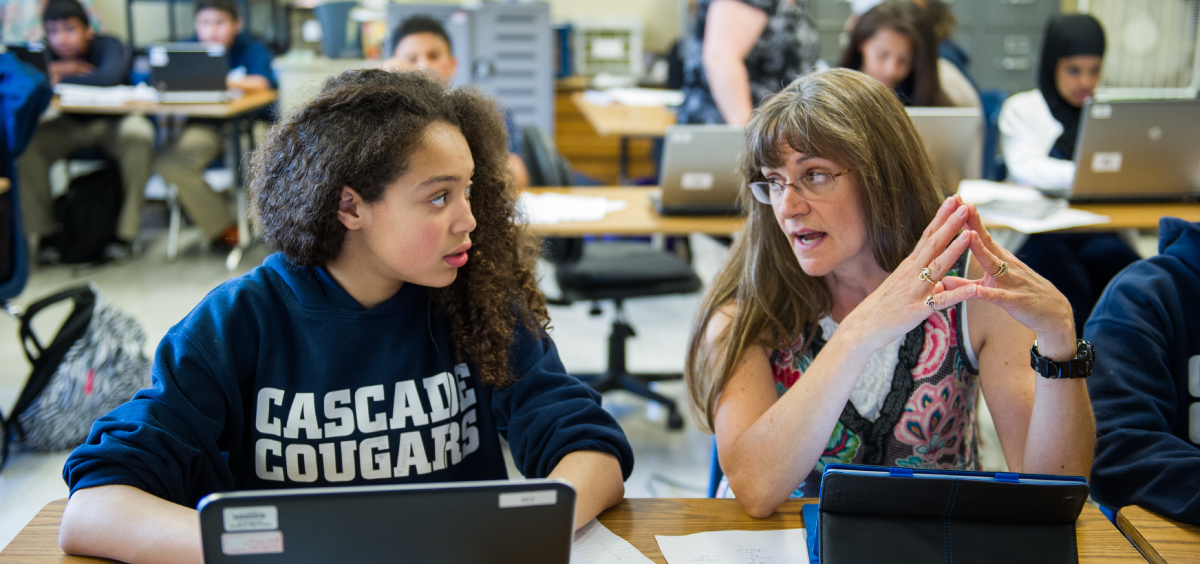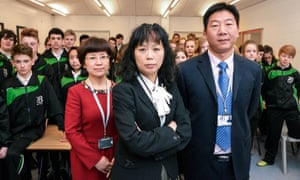More anecdotes on how, in some cases, testing and college prep from an early age are draining the joy out of students… and parents… and teachers…
The question is: How do we counter this?
The children that I get off of the bus are exhausted. They are frustrated. They are over worked. They are burned out. I feel as if I should make them a weak whiskey on the rocks, hand them their pipe and slippers, and leave them alone for an hour to decompress.
It takes them a bit of time before they can think of something positive to tell me, and usually it ends up being something that happened during recess or lunch. I would blame the teachers for this bleak attitude, but I was one, and I know that the teachers are just as tired, frustrated and overworked. Their teachers are trying to inject as much fun into the day as possible, but are obligated to keep up with deadlines, adhere to the curriculum, and meet the standards. No, this pressure is coming from high above. And it is squishing my children with its weight.
Reading, writing and mud: the growth of Forest Schools
How do we sign up for “Forest School”?!
Are you able to bring your students out into nature?
It’s not so much a practice as a philosophy, and one that might easily have disappeared under the greener carpet of Steiner schools and home educators when it first crept in. But, like IKEA, the idea seems to have caught on.
”It’s about them taking a journey, taking risks, developing self esteem and the way they get on with other children. Building activities to support those areas then strengthens what they do in the classroom.”
By: Nisha R Category: Articles Tags: education, education news, Primary education
Science is cool. Yes. We said it. But how to get your students on board? Here are a couple articles that will 1. give you methods and thoughts on how to approach fresh (“Don’t be afraid to push the limits. If kids have stayed with you through one level of complexity, take them to the next. “) and 2. show you some really cool videos!
Few things make a science teacher happier than hearing a child call an idea weird. If you speak fluent child (and a good science teacher does), weird doesn’t mean what it usually means—odd, off-putting. It means interesting, mystifying and deeply, deeply cool.
Keep it complex—sort of: One of the biggest mistakes teachers and scientists make is assuming that technical detail is beyond their listeners. To an extent that’s true; it’s fine to describe the way time dilates as objects accelerate, but don’t ask a lay audience to work the equations with you. But that streamlining can easily go too far. “You see teachers and scientists breaking things down to a level that they just become inaccurate,” Ouseyi says. “You want to reach an audience that’s knowledgeable and up to date.” And if the audience is not that way to begin with, it’s the educator’s job to get them there. “That means making things comprehensible, without dumbing them down,” he says.
But keep it simple too: Folksy beats formal and conversational beats technical every time. The best science instructors are the ones who feel the thrill and understand the wonder in what they’re teaching. Even if it’s the ten thousandth time they’ve covered the material, it’s the first time for many of the listeners. Tone, in this case, is everything. “I have an advantage,” says Oluseyi, “and that’s that I’m from rural Mississippi. I don’t have to break things down too much because that’s just the way I talk and that’s my fail safe.” But good pedagogy is hardly just about geography. “If you really understand something you should always be able to explain it,” he says.
If you are a science teacher who wants to find cool things to show the students, these are some great ideas. If you crave more inspiration, there’s a website called Science Toys that’s a great resource for demonstrating scientific principles using everyday household products.
By: Nisha R Category: Articles Tags: science education, science literacy, teaching science
The Teachers Who Educate Our Youngest Kids Are Struggling To Make Ends Meet
Preschool teachers don’t make much money. Does this surprise you? Probably not. How little is too little, and what does it say about our emphasis on early childhood #education?
Eighty-five percent of voters said they think it’s “very important” or “extremely important” that early childhood educators are well-compensated. Over 90 percent of surveyed voters also said that they “play a critical role in helping children grow and develop.”
“I love working with children and their families. It is so rewarding to go to work every day and help set the stage for a child’s future success and well-being,” Eleanor Johnson, lead #preschool teacher at Rosemount Center in Washington, D.C., said in a press release for the survey. “While there is a lot of passion in the field, there is also a lot of anxiety around the low pay and benefits and what it means for our future.”
Instructing very young children isn’t as lucrative as teaching preteens or teenagers. A preschool teacher earned a median #salary of $27,570 in 2013. The profession’s top salaries were more than $49,660 a year, while the lowest salaries were $18,420 or less. Child day care services tend to employ the most preschool teachers, while elementary and secondary schools tend to pay them the best. New York City leads the pack of top-paying metropolitan areas.
By: Nisha R Category: Articles Tags: education, Preschool Teacher, salary

Two articles for you today, both about the same thing… perhaps.
On the one hand we have the very real phenomenon of endless content being consumed by anyone growing up in the smartphone era. On the other hand we read that #memory is the key to learning. Is it possible that massive amounts of mental detritus could get in the way of memory formation? Or is thi the same thing people worried about with the advent of television (we all turned out ok… right?)
The average American teenager is spending about nine hours a day on entertainment media alone. Is this really the huge problem it’s made out to be? Partly, yes – because while they are engaging with a lot of information during those nine hours, they are creating barely any content of their own in this time.
A remarkable phenomenon occurs when two neurons communicate regularly with each other: the efficiency and strength of the connection increases. This process, called long-term potentiation, is now considered to be a major mechanism by which memories are stored. In addition, dendrites (short-branched extensions of the nerve cell) have a remarkable ability to increase in both size and number in response to learning. This highlights the amazing nature of the brain – it rewires itself and strengthens its connections to store new experiences.
Since the dawn of time, learning and memory have gone together like bread and butter, up and down, spaghetti and meatballs. These two phenomena are so intricately linked that understanding the basics of how we remember can help teachers when designing lessons.
By: Nisha R Category: Articles Tags: education, Memory, Neuroscience

Khan academy is doing big things in #education. We want to know what you think: is this “simple solution” too simple or radical enough to make a difference in your classroom?
Otherwise known as “Mastery Learning”, there is a lot of data to suggest that this can work. And we also know that real world teachers have the real insight into initiatives like this. So let’s hear it!
Suppose a student gets a 75% on a test, which is a passing grade. Khan says this means the student didn’t learn 25% of the material, yet they’re expected to move on to the next lesson with the rest of the class.
…
The education system should work the same way as martial arts or mastering a musical instrument, he says: Practice your white belt skills until they’re perfect, then move up to the yellow belt; practice the beginner piece until you nail it, then move on to the more advanced song; don’t move onto calculus if you haven’t mastered algebra and trigonometry.
A lot of research out there backs up Khan’s idea. Students that don’t move onto the next lesson until they master the first often perform better later in their education career than peers who are arbitrarily shoved along from grade to grade.
Math + Creativity = The Brain Growing
A couple of interesting articles, both with with the topic of #math, courtesy of the always fantastic MindShift blog.
Math and #creativity: at odds with each other, mutually exclusive? Or actually capable of bolstering understanding together? Generally speaking, people understand that art and music can be “explained” with math, that harmonies can be depicted as wavelengths, that color can be explained through light etc.
What about taking the opposite tack? The unexpected bottom line with the first article cited here is that encouraging creative thinking in the math classroom can bring out passion, involvement and understanding.
How about the other side? Those students who feel that they just “aren’t a math person”? This excellent article discusses, among many other things, two main tenets: that ‘believing’ you aren’t a math person re-enforces that reality. The other being the idea that the process of learning math can literally change the brain.
Using Creativity to Boost Young Children’s Mathematical Thinking
In math #education, said Hill, creativity is defined as “kids having their own ideas about how mathematics works and being able to work to verify that those ideas are correct.” As it turns out, she noted, these are the same traits that are recognized and celebrated in advanced mathematics. When elementary teachers encourage students to ask questions, make observations, and tackle problems in inventive ways, they create an environment that supports creative mathematical thinking.
Encourage Students to Question and Observe
“Asking mathematical questions is a form of creativity,” said Hill. Kids love to figure out how things work, so when teachers present a new concept, they should also build in time for students to make observations and ask questions. James uses prompts such as, “What do you notice about this [shape, number, story, or design]?” or “How else could we use [addition, graphing, or sorting] in the classroom?” to help students build these habits.Pose Open-Ended Questions
Teachers can make a habit of posing inventive questions, said Hill — even something as simple as “How can we figure out whether to buy chocolate or vanilla ice cream for the class party?” The trick is letting kids decide for themselves how to figure out a solution. The teacher’s job, said Hill, is to make sure students have the tools they need to solve the problem and to ask clarifying questions during the problem-solving process. James said that when she poses questions that require “struggle and creative thinking instead of rote application of rules,” students are not only more engaged, she is also better able to assess their understanding of key concepts by observing in real time how they apply their math skills.
‘Not a Math Person’: How to Remove Obstacles to Learning Math
“There’s a widespread myth that some people are math people and some people are not,” Boaler told a group of parents and educators gathered at the 2015 Innovative Learning Conference. “But it turns out there’s no such thing as a math brain.” Unfortunately, many parents, teachers and students believe this myth and it holds them up every day in their math learning.
Neuroscience research is now showing a strong connection between the attitudes and beliefs students hold about themselves and their academic performance. That’s a departure from the long-held traditional view that academic success is based only on the quality of the teacher and curriculum. But researchers like Carol Dweck, Camille Farrington and David Yeager have shown repeatedly that small interventions to change attitudes about learning can have an outsized effect on performance.
By: Nisha R Category: Articles Tags: creativity, education, math, math anxiety




